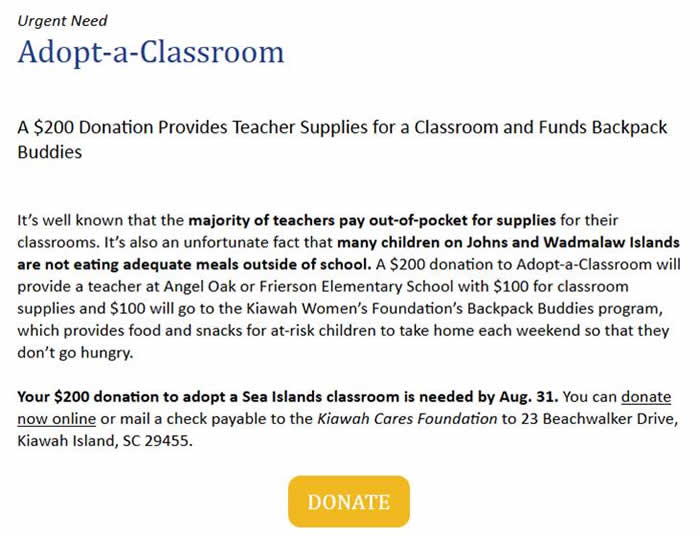Have you heard of the 40-40-20 rule?
It has HUGE implications for your fundraising success.
For years, direct mail marketers and advertisers have followed this cardinal rule.
The "40-40-20 rule" states that the success of any campaign ultimately depends on these three factors:
- 40% on the audience (for you, that's your mailing list)
- 40% on the "offer" you present to that audience
- 20% on the "creative" (the presentation, design, etc.)
In a
previous post, I introduced the concept of "offers."
Think of it as a mental shortcut. An offer is a reason for your donor to give to you
today.
JUST HOW IMPORTANT ARE OFFERS?
Looking at the 40-40-20 rule, you see that "offers" are a BIG part of your fundraising success.
In fact, Steven Screen at the Better Fundraising Company says this,
"
A fundraising 'offer' is the least-understood, most-powerful tool in fundraising."
Yet offers are missing altogether from many fundraising appeals.
Fix that, and you'll be on your way to fixing your fundraising.
WHAT'S A STRONG OFFER?
Strong offers have four key elements: a problem, a solution, a cost, and urgency.
The appeal below presents all four elements, in a short, succinct email.

You can
click here for a summary of what makes it a good offer / appeal.
WHAT COULD BE IMPROVED IN THIS OFFER / APPEAL
In this appeal, the "ask" is for a $200 donation. It will be used to fund two needs: $100 for teachers (and classroom supplies) and $100 for kids (and backpack snacks).
One thing that could be improved in this appeal is to ask donors to do one thing, instead of two.
Why does that matter?
Some donors may want their entire donation to go to the classroom OR to the snack program.
Some may not be able to give $200 and wonder if a smaller gift will still help and, if so, how?
And some may want to give even more than the $200 that's being requested.
That's why it's usually best to ask for one thing, in multiples.
(It's also a good idea to ask multiple times each year. But that's a future post.)
WHAT DOES "ONE THING, IN MULTIPLES" LOOK LIKE?
For the kids who rely on school lunches? The offer could be this:
"Many kids at Our Elementary School rely on school breakfasts and lunches during the week. Your $12.50 donation can provide healthy weekend snacks for one child, for one month. Your $100 donation can provide snacks for that child, every weekend, for the entire school year. Please send $12.50, $25, $100, or more by August 31. You'll keep our kids happy, healthy, and fed on weekends."
For the teachers? The offer might look like this:
"Teachers spend about $500 a year, out-of-pocket, to buy the basic supplies their students need in the classroom. Your $50 donation can help a teacher buy what's needed to support her students for one month during the school year. Please send $50, $100, or more by August 31. You'll be helping a teacher and her students start the year strong."
In these examples, $12.50 and $50 are low entry points. Most donors can afford that.
And you've told her what those specific amounts can do.
By making a strong offer like this - and asking for one thing in multiples - you're giving your donor a mental shortcut.
You're making the offer easy to understand.
You're making it easy for her to say, "Yes! I'll give today!"
All that's left is for her to decide how much impact she wants to have. Then she chooses her donation amount accordingly.
Try it. It works!
(I can review your last appeal, tell you what works and what could make your next fundraising letter perform even better.)
HOW YOU CAN USE THIS INFORMATION
The organization in the example above makes a good offer. (As you saw, even good offers can be improved.)
They also do a great job of sending out multiple asks (and offers) throughout the year. (We'll explore why that's important in a future post.)
For now, start thinking about your next appeal and the "offer" you might make to donors.
Specifically, think about how you could break down your offer into one thing.
Think about a low entry point that would affordable for all of your donors.
Then, in your offer, make it clear to your donor that she has the ability to have an even greater impact. By doing one thing. In multiples.
To get more information on offers and the 40-40-20 rule, download this free ebook from the fine folks at Bloomerang.
Photo credit(s): Pixabay
Need help creating a compelling offer? Or writing a fundraising appeal that will raise more money? Laura Rhodes can help.
Send a message to start the conversation and learn how Laura can help you and your organization.
You may also be interested in
upcoming training events.